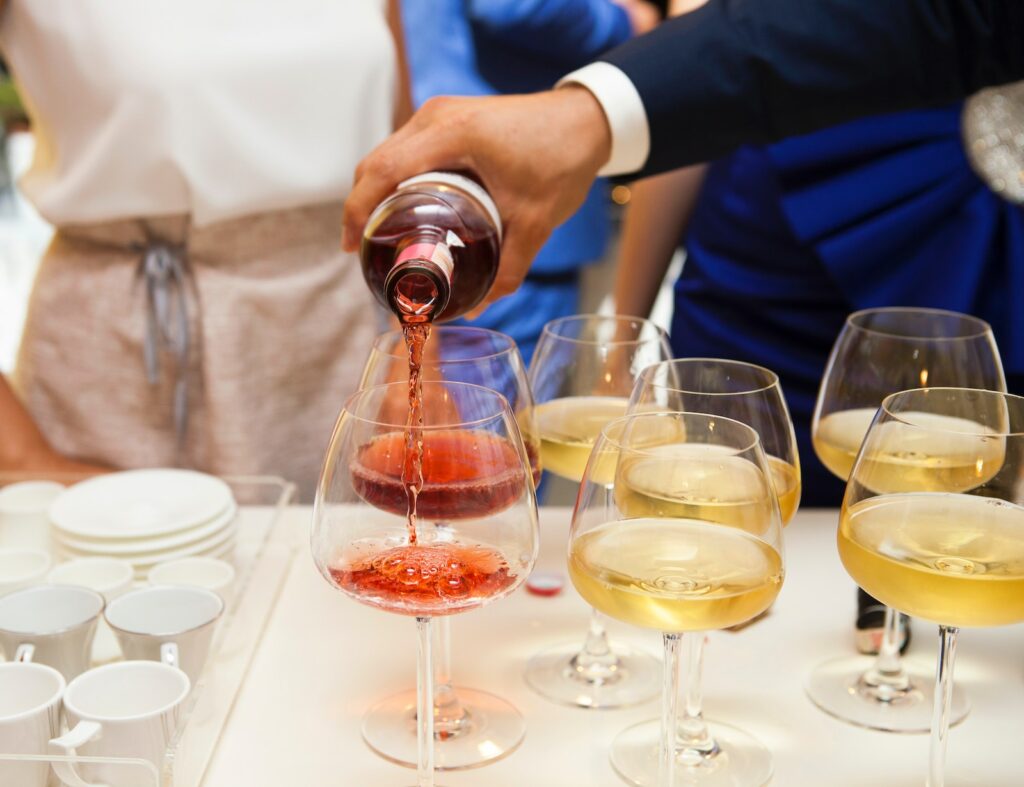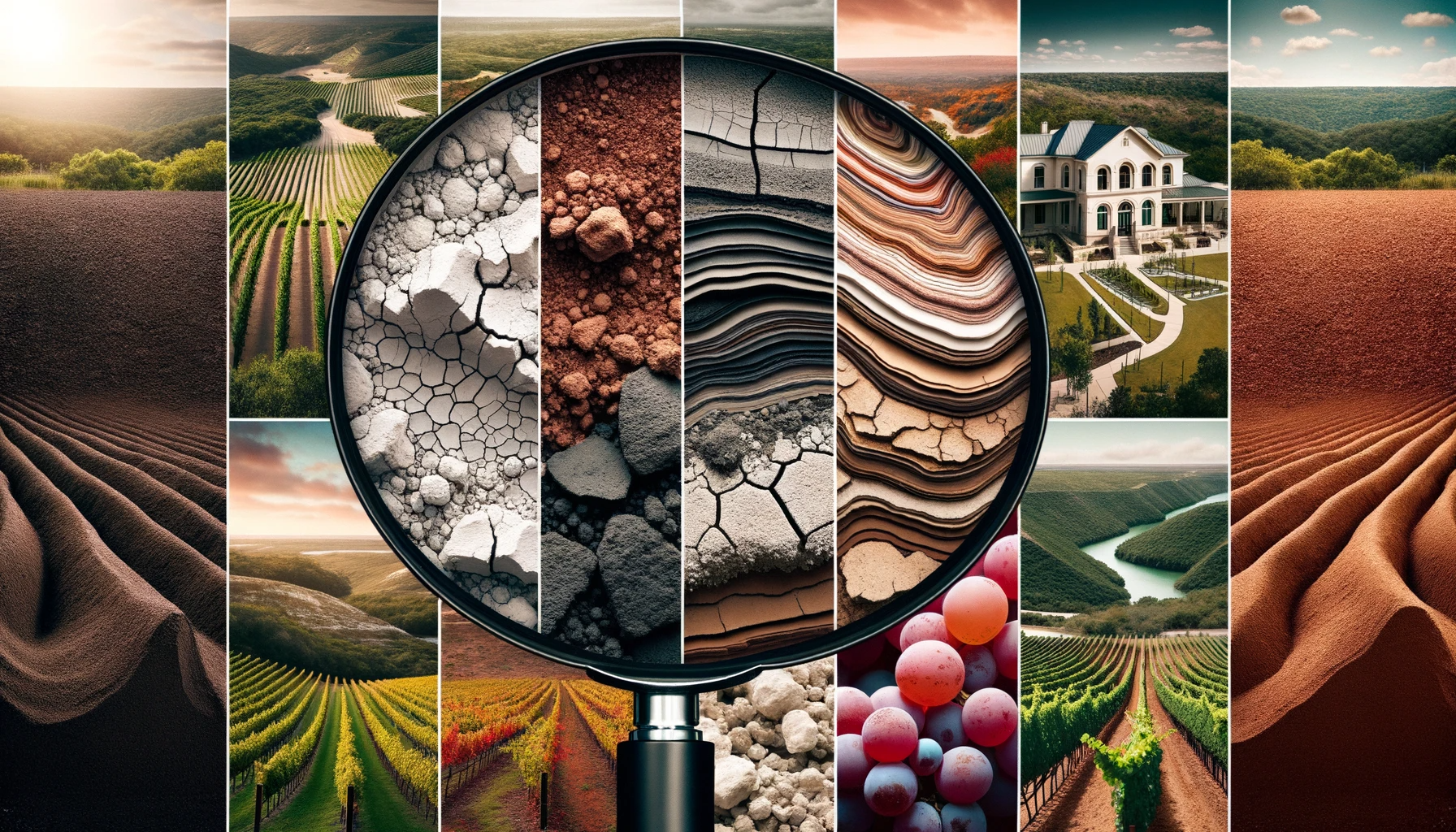
If you’re a wine lover and you’re looking to explore different wine regions, you should definitely add Texas to your list. Texas is the fourth largest wine-producing state in the US, and it has a lot to offer to wine enthusiasts. Texas wines are unique, with a distinct flavor profile that sets them apart from other wines produced in the country.
If you’re new to tasting Texas wines, you might be wondering how to get started. Tasting wine can be an intimidating experience, but it doesn’t have to be. In this beginner’s guide, we’ll walk you through the basics of how to taste Texas wines. We’ll cover everything from what to look for in the color and clarity of the wine to how to evaluate the aroma and flavor profile. With this guide, you’ll be able to confidently taste and appreciate Texas wines like a pro.
Understanding Wine Basics
If you’re new to wine, it can be overwhelming to know where to start. In this section, we’ll cover some basic information about wine, including the different varieties, regions, and vocabulary.
Wine Varieties
Wine is generally categorized into three main varieties: red, white, and rosé. Red wines are made from red or black grapes, while white wines are made from white or green grapes. Rosé wines can be made from any grape variety, but they are typically made by leaving the grape skins in contact with the juice for a short period of time to produce a pink hue.
Within each variety, there are many different grape varieties that can be used to make wine. Some common grape varieties for red wines include Cabernet Sauvignon, Merlot, and Pinot Noir. For white wines, popular grape varieties include Chardonnay, Sauvignon Blanc, and Riesling.
Wine Regions
Wine is produced all over the world, and each region has its own unique characteristics that can impact the taste of the wine. Some popular wine regions in Texas include the Hill Country, High Plains, and Texas Davis Mountains.
Wine Vocabulary
Understanding wine vocabulary can be helpful when tasting and describing wine. Some common terms include:
- Full-bodied: Refers to a wine that is rich and robust in flavor and texture.
- Dry: Refers to a wine that is not sweet.
- Varietal: Refers to a wine made from a specific grape variety.
- Tannins: Refers to the bitterness or astringency in wine, which comes from the skins, seeds, and stems of the grapes.
- Acidity: Refers to the tartness or sourness in wine, which can help balance out sweetness.
By understanding the basics of wine, you’ll be better equipped to explore and enjoy the world of Texas wines.
The Art of Tasting Wine
Tasting wine is an art that can be learned and perfected with practice. It involves using all your senses to evaluate the wine’s appearance, aroma, flavor, and finish. Here are some tips for tasting Texas wines like a pro.
Appearance
The appearance of the wine can give you clues about its age, grape variety, climate, and alcohol content. To evaluate the appearance, hold the glass against a white background and observe the following:
- Color: Is it red, white, or blush? If it’s red, is it maroon, purple, ruby, garnet, red, brick, or even brownish? If it’s white, is it clear, pale yellow, straw-like, light green, golden, amber, or brown in appearance?
- Opacity: Is the wine watery or dark, translucent or opaque, dull or brilliant, cloudy or clear?
Aroma
The aroma of the wine can reveal its complexity, intensity, and quality. To evaluate the aroma, swirl the wine in the glass to release the aromas and then sniff it. Try to identify the following:
- Aromas: What aromas do you detect? Are they fruity, floral, spicy, earthy, or woody? Can you identify specific fruits, flowers, spices, or herbs?
- Intensity: How intense are the aromas? Are they faint, moderate, or strong?
- Complexity: How many different aromas can you detect? Are they simple or complex?
Flavor
The flavor of the wine can confirm or contradict the aroma and reveal its taste structure. To evaluate the flavor, take a sip of the wine and let it linger in your mouth. Try to identify the following:
- Taste structure: Is it sour, bitter, sweet, or salty? Is it balanced, acidic, or tannic?
- Flavors: What flavors do you detect? Are they similar or different from the aromas? Can you identify specific fruits, spices, herbs, or other flavors?
- Texture: How does the wine feel in your mouth? Is it light-bodied, medium-bodied, or full-bodied? Is it smooth, velvety, or rough?
Finish
The finish of the wine can reveal its aftertaste and overall quality. To evaluate the finish, swallow the wine and observe the following:
- Aftertaste: What flavors linger in your mouth? Are they pleasant or unpleasant? How long do they last?
- Quality: Is the finish short, medium, or long? Is it smooth, harsh, or astringent? Does it leave you wanting more?
In conclusion, tasting wine is an art that requires practice, patience, and attention to detail. By evaluating the wine’s appearance, aroma, flavor, and finish, you can develop your palate and appreciate the nuances of Texas wines.
Choosing the Right Wine
When it comes to choosing the right wine, there are a few things to consider. The most important thing is to choose a wine that you will enjoy. Whether you prefer red wine or white wine, sweet wine or dry wine, there is a Texas wine out there for you. Here are a few tips to help you choose the right wine:
Reading a Wine Label
Reading a wine label can be confusing, but it doesn’t have to be. Here are a few things to look for when reading a wine label:
- Bottle Size: The size of the bottle is usually indicated on the label. Most wine bottles are 750ml, but you may also see 375ml or 1.5L bottles.
- Serve Temperature: The label may also indicate the ideal serving temperature for the wine. This can be helpful in ensuring that you are serving the wine at the right temperature.
- Made From: The label should indicate what type of wine it is (red, white, or rosé) and what grape(s) it is made from (such as Chardonnay, Cabernet Sauvignon, Riesling, Merlot, Sauvignon Blanc, or Pinot Noir).
- Vintage: The label should indicate the year that the grapes were harvested. This can be important in determining the quality of the wine.
- Region: The label may also indicate the region where the grapes were grown. Some popular regions for Texas wines include the Hill Country, High Plains, and Texas Davis Mountains AVAs.
Buying Wine
When it comes to buying wine, there are a few things to keep in mind:
- Choose a Wine Shop: Look for a wine shop with a knowledgeable staff that can help you choose the right wine. They can help you find a wine that fits your taste and budget.
- Try Before You Buy: Many wine shops offer tastings, which can be a great way to try before you buy. This is especially helpful if you are new to wine or trying a new type of wine.
- Consider Food Pairings: Think about what you will be serving with the wine. Some wines pair better with certain foods than others. For example, a Cabernet Sauvignon pairs well with red meat, while a Riesling pairs well with spicy foods.
- Choose a Price Point: Set a budget for how much you want to spend on a bottle of wine. You can find great wines at all price points, so don’t feel like you need to spend a lot of money to get a good wine.
When it comes to choosing and buying Texas wines, there are many options available. Whether you prefer red, white, dessert, or sparkling wines, there is a Texas wine out there for you. By reading the label and considering your food pairings and budget, you can find the perfect wine for any occasion.
Pairing Wine with Food
Pairing wine with food can be a transformative experience that elevates both the wine and the food to make both taste better than initially imagined. Here are some basic guidelines to help you get started with pairing Texas wines with different types of food.
Wine and Meat
When it comes to pairing wine with meat, the general rule of thumb is to pair red wine with red meat and white wine with chicken and seafood. However, this is not a hard and fast rule and there are many exceptions. For example, a full-bodied red wine like a Cabernet Sauvignon can pair well with a grilled steak, while a lighter red like a Pinot Noir can complement a roasted chicken.
Wine and Fish
When pairing wine with fish, it’s important to consider the flavor and texture of the fish. Light-bodied white wines like a Sauvignon Blanc or a Pinot Grigio pair well with white fish like tilapia or cod, while a medium-bodied white wine like a Chardonnay can complement a richer fish like salmon. If you prefer red wine, a light-bodied red like a Pinot Noir can pair well with grilled or roasted fish.
Wine and Vegetables
Pairing wine with vegetables can be a bit more challenging, as vegetables can have a wide range of flavors and textures. For lighter vegetables like asparagus or green beans, a crisp white wine like a Sauvignon Blanc can be a good choice. For heartier vegetables like mushrooms or eggplant, a medium-bodied red wine like a Merlot can be a good option.
Remember, the key to successful wine and food pairings is to experiment and find what works best for your taste buds. Enjoy trying different combinations with friends and loved ones, and don’t be afraid to step outside of your comfort zone to discover new and exciting flavor profiles.
Understanding Wine Language
When it comes to tasting wine, it’s essential to have a basic understanding of wine language. This language allows us to describe the wine’s flavors, aromas, and other characteristics. In this section, we will cover some of the most common wine terms you’ll encounter when tasting Texas wines.
Describing Wine
Describing wine is a subjective experience, and everyone’s palate is different. However, there are some general terms that wine experts use to describe wine. Here are some of the most common ones:
- Aroma: The scent of the wine.
- Flavors: The taste of the wine.
- Tannins: The dryness or astringency of the wine.
- Body: The weight and texture of the wine.
- Finish: The aftertaste of the wine.
When describing wine, it’s important to be specific. For example, instead of saying a wine has a “fruity” flavor, try to identify the specific fruit flavor, such as “strawberry” or “blackberry.”
Wine Rating System
Wine rating systems are used to evaluate the quality of a wine. One of the most popular rating systems is the 100-point scale. Wines are rated on a scale from 50 to 100, with 50 being the lowest and 100 being the highest. Here’s how the ratings are typically broken down:
- 95-100: Classic wine
- 90-94: Outstanding wine
- 85-89: Very good wine
- 80-84: Good wine
- 75-79: Mediocre wine
- 50-74: Not recommended
It’s important to note that wine ratings are subjective and can vary from person to person. Additionally, a wine’s vintage can affect its rating, as some years produce better grapes than others.
In conclusion, understanding wine language is essential when it comes to tasting and evaluating Texas wines. By learning the common terms used to describe wine and the rating system, you can develop your wine knowledge and communicate your preferences to winemakers and other wine enthusiasts.
Exploring Texas Wineries
When it comes to tasting Texas wines, there’s no better way to experience the flavors and nuances of the region than by visiting a local winery. Here are some tips for exploring Texas wineries and making the most of your wine-tasting journey.
Visiting a Winery
Visiting a winery is a great way to explore the world of Texas wines. Most wineries offer guided tours of their vineyards and facilities, giving visitors a behind-the-scenes look at the winemaking process.
When visiting a winery, it’s important to dress appropriately for the weather and wear comfortable shoes, as tours often involve walking through vineyards or production facilities. Additionally, it’s always a good idea to call ahead and make a reservation, as some wineries may have limited availability or require advance notice for tours.
Wine Tours
If you’re looking for a more comprehensive wine-tasting experience, consider booking a wine tour. Many companies offer guided tours of Texas wineries, taking visitors on a journey through the state’s various growing regions and vineyards.
Wine tours can be a great way to learn more about the different grape varieties grown in Texas, as well as the unique climate and soil conditions that contribute to the region’s distinctive flavors. Additionally, many wine tours include tastings at multiple wineries, giving visitors the opportunity to sample a wide variety of Texas wines.
Whether you’re embarking on a solo quest to study Texas wines or simply looking for a fun and educational experience, exploring Texas wineries is a must for any wine enthusiast. With its welcoming atmosphere, diverse growing regions, and world-class wineries, Texas is quickly becoming one of the most exciting wine destinations in the United States.
Becoming a Wine Connoisseur
If you want to become a wine connoisseur, there are a few things you can do to improve your knowledge and appreciation of Texas wines. Here are some tips to help you get started:
Improving Your Palate
The first step to becoming a wine connoisseur is to improve your palate. This means learning to taste and describe the different flavors and aromas in wine. To do this, you should start by tasting a variety of wines and taking notes on what you taste and smell. Look for tasting notes on the bottle or online to guide you and help you identify the different flavors and aromas.
When tasting wine, pay attention to the body, texture, and finish of the wine. The body refers to the weight and viscosity of the wine, while the texture refers to the way the wine feels in your mouth. The finish is the aftertaste that lingers in your mouth after you swallow the wine.
Learning from Experts
Another way to become a wine connoisseur is to learn from experts. Attend wine tastings and events, where you can taste a variety of wines and learn from winemakers and other experts. Ask questions and take notes on what you learn. You can also join a wine club or take a wine course to improve your knowledge and appreciation of wine.
Reading Wine Books
Reading wine books is another great way to become a wine connoisseur. Look for books that cover the basics of wine tasting and appreciation, as well as books that focus on specific regions or types of wine. Some popular books include “The Wine Bible” by Karen MacNeil and “Windows on the World Complete Wine Course” by Kevin Zraly.
Remember that becoming a wine connoisseur takes time, patience, and confidence. With practice and dedication, you can learn to appreciate the different flavors and aromas in Texas wines and become a true wine connoisseur.



